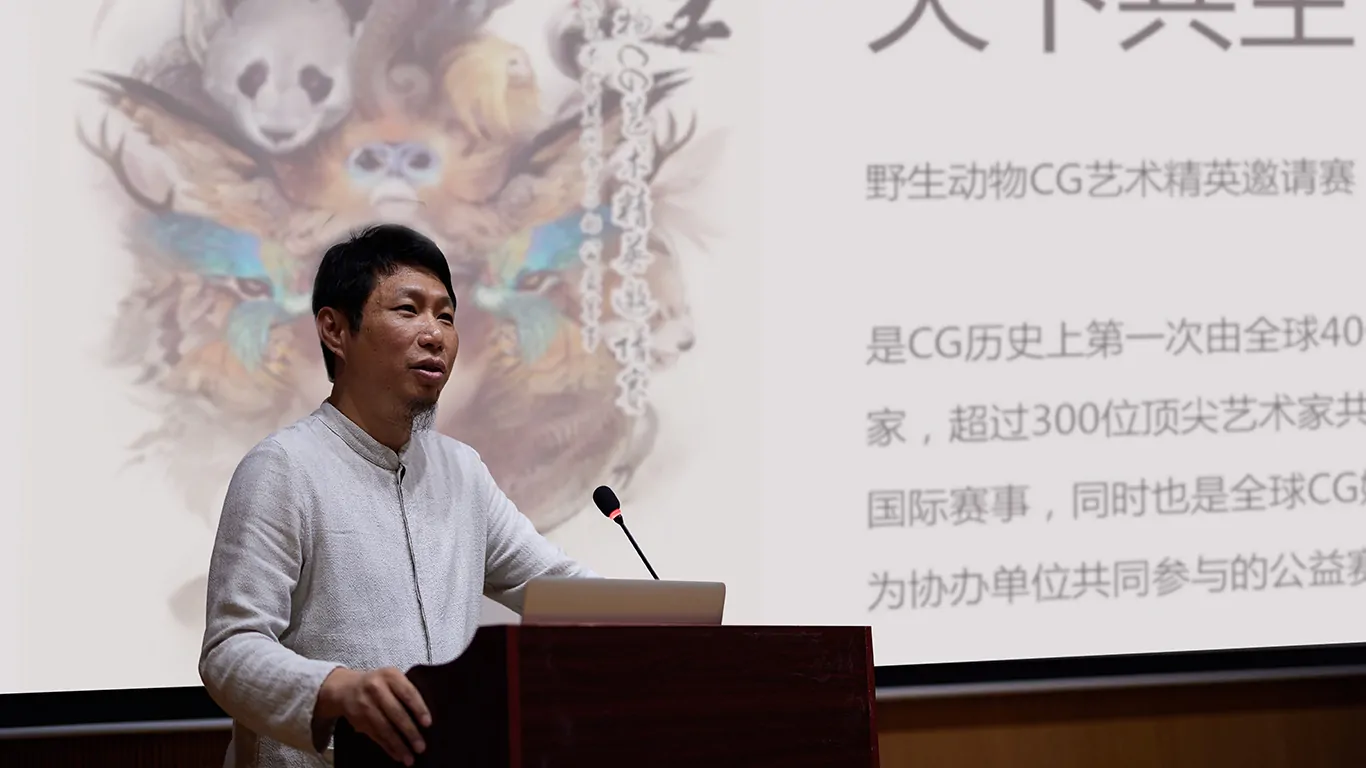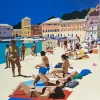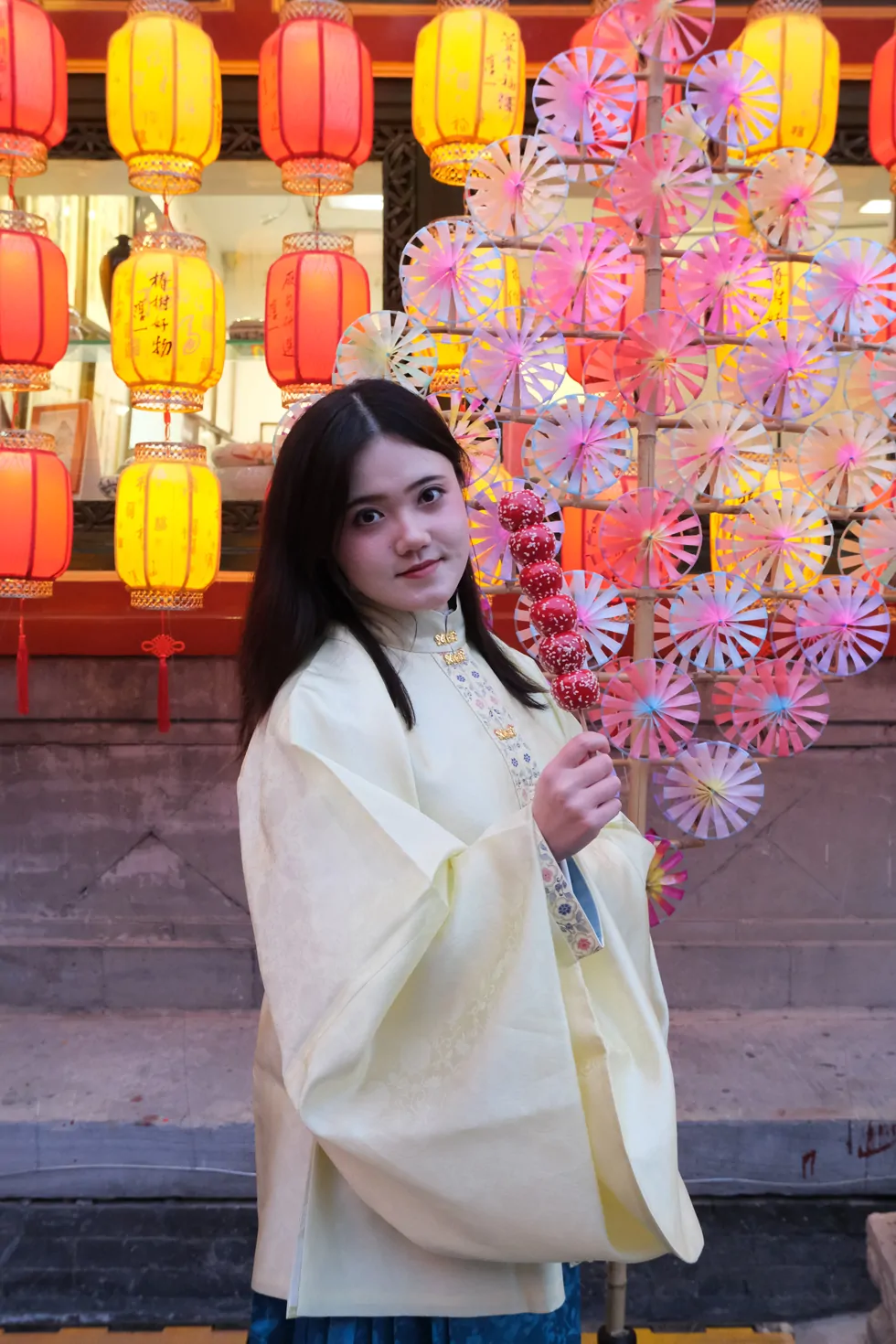Curator Steve Yuan’s ArtPage blends tradition and innovation, bringing Chinese mythology to global audiences through exhibitions, books, and film.
Steve Yuan (Yuan Zheng, 袁征) has long dedicated himself to scouting and nurturing high-quality digital art (CG art), with a particular focus on Chinese Mythology Art. As early as in 2006, he founded China’s first CG artist community, leewiART – now known as ArtPage (artp.cc). To date, ArtPage has collaborated with more than 5,000 artists worldwide, organised or co-organised over 100 global open calls and competitions, curated over 30 themed art exhibitions, published over 30 art books, and invested in both an animated feature film and a live-action production.
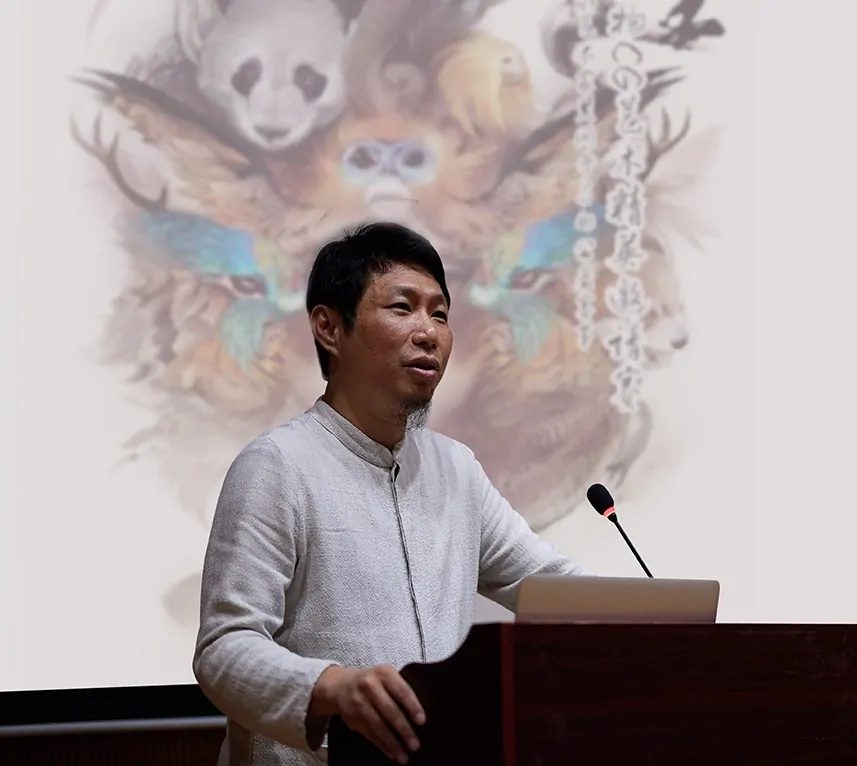
Courtesy of Steve Yuan (Yuan Zheng, 袁征)
For me, it is crucial to find creators who have an independent understanding of Chinese mythology. The artists I work with each have their own self-driven interpretations of mythology
Steve Yuan (Yuan Zheng, 袁征)
Today, ArtPage spans publishing, exhibitions, merchandise and derivatives, games, and film, continuing to advance digital art and high-quality creative content through strong resource integration and a truly global outlook.
Over the years, Yuan has developed a unique ‘incubation’ approach by integrating global resources across publishing, art, exhibitions, designer toys, film, and gaming, while establishing diverse models of collaboration.
Through this approach, ArtPage’s projects have not only promoted the dissemination of high-quality original works but also achieved considerable commercial success. Some of ArtPage’s hallmark projects include ‘PSYCHOPOMP’ by Wayne Barlowe (USA),‘Rechild’ by Zeenchin (Malaysia), ‘Ghost’ by Lin Wenjun (China), ‘Bloody Sun’ by Ju Zhen (China) , ‘Feng shen’ by Duan Lei (China) and ‘Shan Hai Jing’ by Shen Xin (China), among others.
In 2024, as part of the celebrations for the 50th anniversary of the establishment of diplomatic relations between China and Malaysia, ArtPage launched the pioneering Chinese Myth Art Exhibition in Kuala Lumpur. The works showcased were all inspired by Chinese classics Shan Hai Jing (Classic of Mountains and Seas, an ancient text of mythic geography and beasts, dating back 2000 years) and Feng Shen (Investiture of the Gods, a 16th-century Chinese novel and one of the major vernacular Chinese works in the ‘gods and demons’ genre).
The works of Shan Hai Jing by Shen Xin employ traditional ink painting techniques to delicately depict over 200 characters from the Chinese classic, highlighting the depth and vitality of Chinese ink art. Feng Shen by Duan Lei utilizes a combination of ink and vibrant colours to convey a fresh interpretation of the mythological figures. Shan Hai Goddess focuses on female characters from mythology, integrating contemporary design and trend-driven aesthetics to imbue the work with a strong sense of fashion and modernity.
The Chinese Myth Art Exhibition series has since then been successfully showcased in both China and overseas in Malaysia and Singapore. This year, the Exhibition featured ‘Ghost’ by Lin Wenjun, inspired by Shan Hai Jing and aesthetically drawn from the Chinese blue-and-white porcelain, attracting audiences from all age groups.
We sat down with Yuan and discussed his artistic philosophy as well as the future plans of ArtPage. With great success in southeast Asia already, where will the Chinese Myth Art Exhibition take its next step?
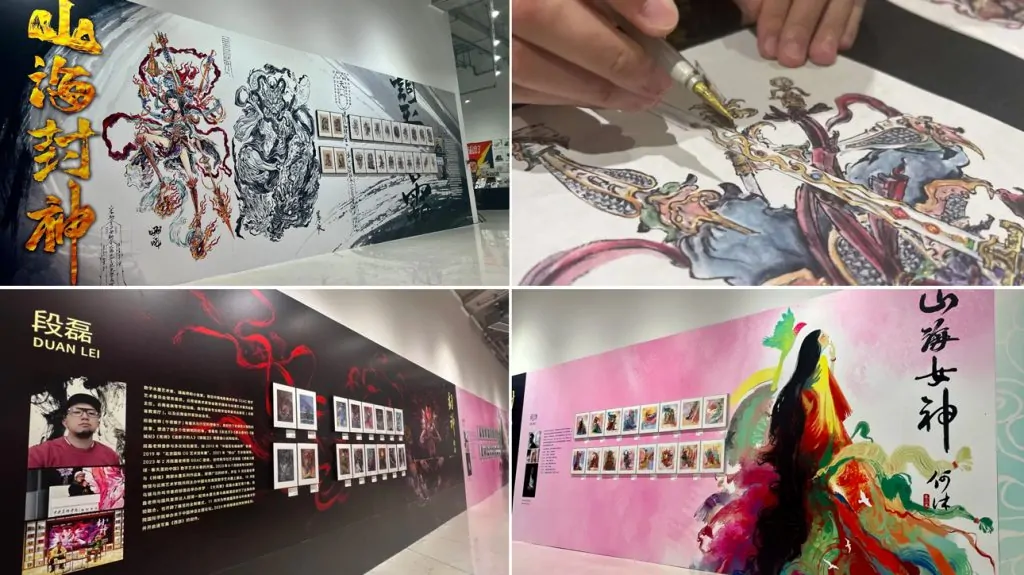
Beijing 2024
Courtesy of Steve Yuan (Yuan Zheng, 袁征)
What do you think are the biggest challenges in integrating traditional Chinese cultural themes into modern aesthetics?
Steve Yuan (Yuan Zheng, 袁征): For me, it is crucial to find creators who have an independent understanding of Chinese mythology. The artists I work with each have their own self-driven interpretations of mythology: for example, Shen Xin regards Shan Hai Jing as an “ancient encyclopaedia,” extracting hidden codes of knowledge.
Duan Lei reshapes mythological figures through the lens of modern psychology and personality. He Mu favours female mythological figures, using design language to construct contemporary aesthetics.
Lin Wenjun (Junxi) blends reflections on life with the Shan Hai Jing, recounting the journey of “Xiao Sang,” a descendant of the deer clan, who travels a thousand miles in search of her master, interwoven with threads of multi-ethnic cultural traditions.
My principle is to follow the natural course and go with the flow: respect this inner drive, provide the right narrative and exhibition space, and allow the works to grow on their own.
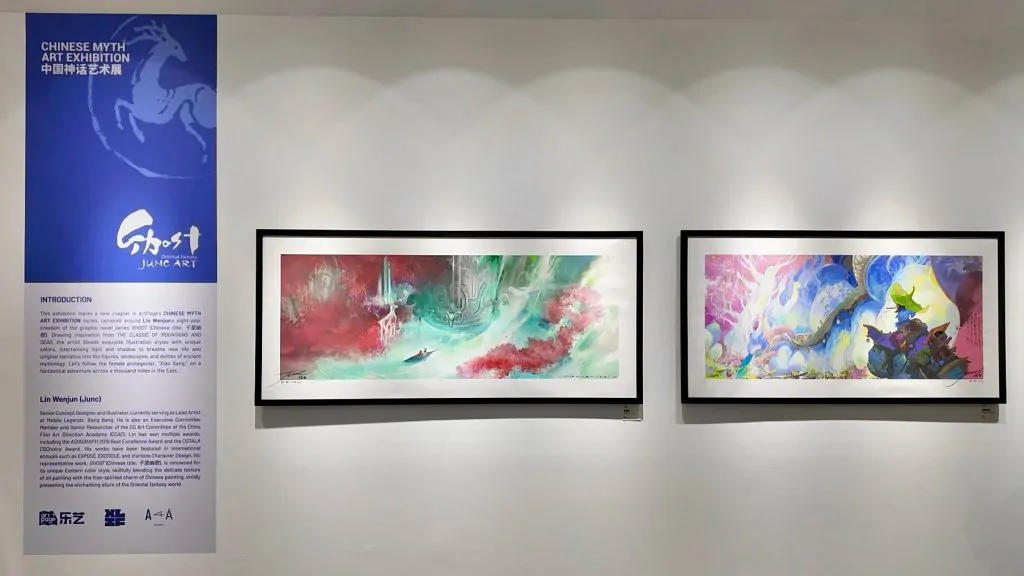
Chinese Myth Art Exhibition
Kuala Lumpur 2025
Courtesy of Steve Yuan (Yuan Zheng, 袁征)
Over the past ten to twenty years, how do you view the changes in public attitude towards artworks based on traditional Chinese culture?
Steve Yuan (Yuan Zheng, 袁征): Over the past decade, the public mindset has shifted from “niche nostalgia” to a creative reinvention based on cultural confidence. Since 2015, animated films such as Monkey King: Hero is Back and Nezha sparked heightened attention. Nowadays, young audiences value high-quality storytelling and unique aesthetics over mere labels like “traditional”, or “guofeng” (meaning “national style”).
Cultural frameworks of viewing and interpretation evolve with the times. Chinese mythology is now being redefined through the lens of ‘young eyes’: they seek narratives that break conventions, styles with strong distinctiveness, and emotional connections that feel authentic. Empowered by the internet, this aesthetic is transcending borders and generating global resonance.
How do you balance commercial and artistic expression in projects like A Thousand Miles of Serenity, Feng Shen (Investiture of the Gods), and Shan Hai Jing?
Steve Yuan (Yuan Zheng, 袁征): I see myself as a “discoverer/facilitator”. First, I identify authors and works with long-term vitality, then test the waters in small steps — small-scale exhibitions, limited edition art books, co-branded trial pieces, educational workshops, etc.—to gather authentic feedback from the market and community. Commercially, I expand across multiple touchpoints (e.g. publishing, exhibitions, merchandise, games, films, digital content) to diversify risk, while ensuring creators retain their core space for expression without being constrained by the logic of short-term blockbusters.
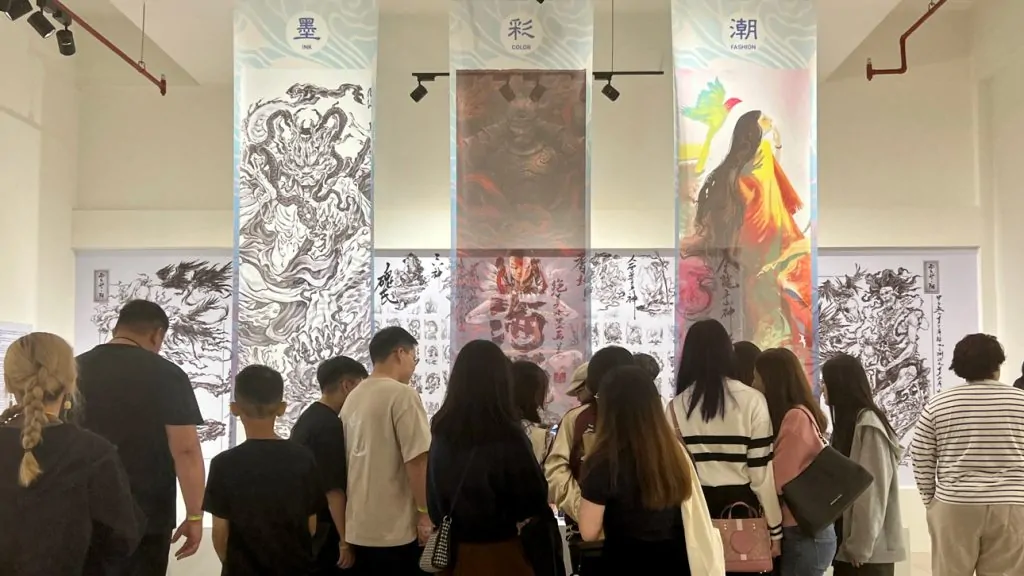
Chinese Myth Art-Exhibition
Kuala Lumpur 2024
Courtesy of Steve Yuan (Yuan Zheng, 袁征)
When curating an exhibition, what criteria do you use to select the mythological stories to present? Do you prioritize popularity, cultural value, visual impact, or other factors?
Steve Yuan (Yuan Zheng, 袁征): I begin with the artist’s core artistic expression, then make dynamic choices based on three dimensions: recognisability (to lower the entry barrier), cultural value (to ensure depth), and visual expressiveness (to enhance on-site and communicative impact). Based on this foundation, I strictly control baseline costs and pacing, giving creative freedom back to the artists.
In your view, what are the differences in curatorial focus or challenges when hosting a Chinese mythology-themed art exhibition in London or continental Europe, compared to previous exhibitions you curated in Singapore and Malaysia? What approaches do you think should be taken to help local audiences better understand and appreciate the works?
Steve Yuan (Yuan Zheng, 袁征): Objectively speaking, Southeast Asia has closer ties to Chinese culture and easier access to resources. Europe is culturally more distant, but with works like Nezha films and the game Black Myth: Wukong gaining global attention, recognition and curiosity are rising. I believe this is an inevitable trend of cultural development. Additionally, we tailor artist selections based on data from overseas social media and local aesthetic preferences.
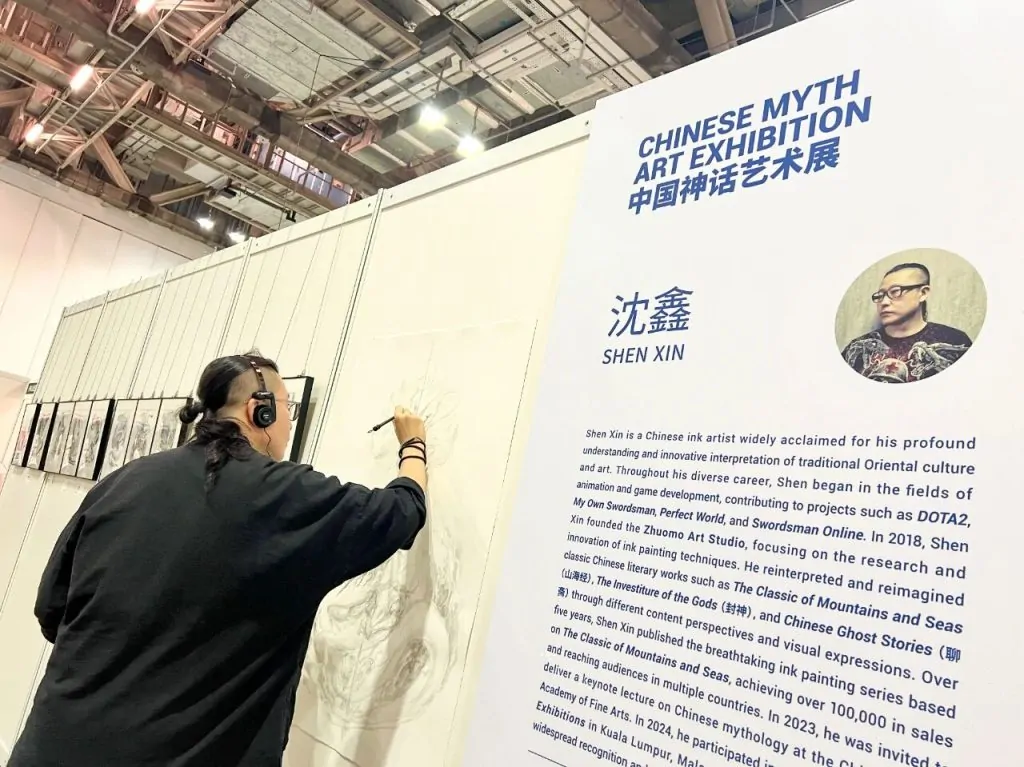
Chinese Myth Art Exhibition
Singapore 2024
Courtesy of Steve Yuan (Yuan Zheng, 袁征)
We have talked about how mythological themes strongly appeal to young audiences. In your opinion, for young people from different cultural backgrounds, what differences are there in their interests in Chinese mythology? Do these differences affect the way you make choices about exhibition content?
Steve Yuan (Yuan Zheng, 袁征): Overall, due to the rise of the internet and short videos in recent years, global youth aesthetics are both unified on a global stage and subdivided into many niche areas. In an era where individuality seems to be disappearing, everyone is searching for their uniqueness. Under this trend, it’s better not to predefine too much, but instead to present more and let audiences discover their own uniqueness.
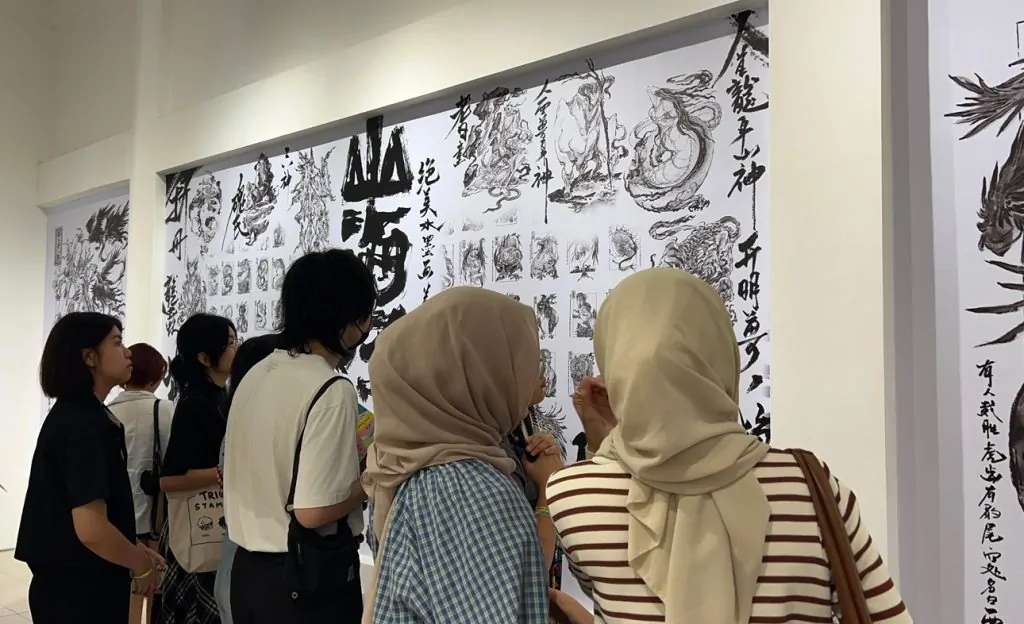
Chinese Myth Art Exhibition
Kuala Lumpur 2024
Courtesy of Steve Yuan (Yuan Zheng, 袁征)
In the context of globalization, overseas dissemination of Chinese mythology may receive greater attention but also risk being simplified or misinterpreted. How do you view this phenomenon? How would you effectively avoid misinterpretation in the process and ensure that the core essence is accurately conveyed in a cross-cultural context?
Steve Yuan (Yuan Zheng, 袁征): We shouldn’t fear simplification or misinterpretation. The key is to present in ways that carry vitality. This is why I consistently choose artists with unique creativity to re-shape traditions. Our traditions and mythology belong to the past; they themselves lack vitality. Only when each generation layers on their own life experiences can tradition and mythology continuously regenerate, shine, and move forward.
©2025 Steve Yuan (Yuan Zheng, 袁征)
Ashley, a graduate of the London School of Economics with degrees in Philosophy, Economics, and Economic History, explores the intersections of art, history, philosophy, and technology. She examines how historical narratives shape visual culture, how philosophical ideas manifest in art, and how emerging technologies like AI and blockchain redefine its creation and ownership.


